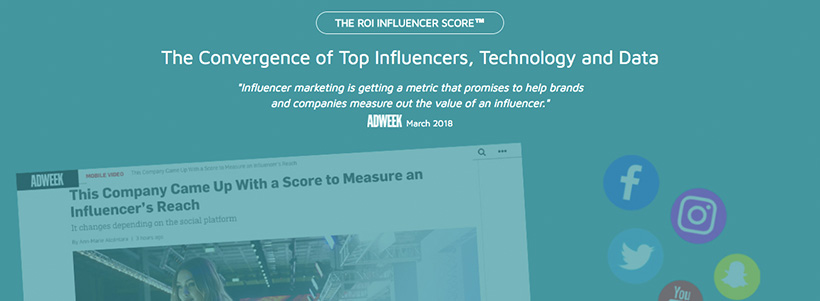 March Madness might be upon us, but that doesn’t mean that your marketing efforts need to be as chaotic as your brackets. If you are looking to add some stability to your influencer marketing efforts or are seeking a better grasp on Twitter’s new impending verification process, here are some of the latest updates to keep in mind.
March Madness might be upon us, but that doesn’t mean that your marketing efforts need to be as chaotic as your brackets. If you are looking to add some stability to your influencer marketing efforts or are seeking a better grasp on Twitter’s new impending verification process, here are some of the latest updates to keep in mind.
New tools, techniques may bring influencer marketing ROI out of the darkness
Undoubtedly you have either thought about engaging in influencer marketing, have been involved in influencer marketing efforts, or are being told that you should improve how you market with influencers. At every turn, marketers are inundated with influencer marketing and the supposed success it can bring to your brand.
Despite the ubiquity of influencer marketing, one tiny question remains: Does influencer marketing, you know, actually work?
Opinions about the effectiveness of influencer marketing abound, but recently there seems to be some real energy going into helping marketers understand how to engage with influencers — and how to measure influencer marketing.
What’s the problem with influencer marketing?
If you are one of those marketers who has an unlimited budget and doesn’t need to show ROI, then there is no problem at all. Unfortunately for the rest of us, we need to be able to measure and report on success. Until now, that has been a struggle with influencer marketing.
A survey at a Digiday Retail Summit found that more than 2/3 of retail executives said “measuring campaign performance is a challenge with influencer marketing.” A third of those same executives also said that influencers pose a risk to brand safety. Perhaps the most troublesome statistic for marketers regarding influencer marketing is that more than 70 percent of these executives would not classify influencer marketing as extremely or very effective.
What will change this?
ROI Influencer Media has come up with what it calls a ROI Influencer Score. In the past, influencers were selected almost solely based on how many followers they had on their social accounts, but the ROI Influencer Score takes into account how well influencers are able to engage their audiences.

The score is calculated based on a formula that accounts for shares, likes, video views, and more. The company also takes into account how all of an influencer’s posts have performed in the last 30 days and demographic and historical trend data in calculating the score.
The company hopes it can help marketers look past influencers with high follower accounts but low engagement, and instead allow marketers to focus more on micro-influencers who have more engaged followers.
What to do in meantime?
The good news is that tools and techniques to help marketers and executives feel more confident in their influencer marketing campaigns are on their way. But as these tools continue to develop, what can you do in the meantime?
Digital marketing strategist Jay Baer uses the following words to describe effective influencer marketing on his “Jay Today” vlog:
- Relevant: “Relevancy is one of the best practices for influencer marketing.”
- Useful: “I think it’s better when you have influencers participate in programs that create something useful for potential customers.”
- Co-Created: “Co-creation makes it a lot more interesting for the influencer, and I think actually more likely that they will participate.”
- Human: “[Being authentic] is much more interesting and I think much more persuasive and useful.”
MarTech is offering special registration rates for a limited time. Marketers who want to learn more about GDPR, blockchain, chatbots, and security risks can access beta rates for the April 23-25 conference until March 17.
The 2018 Global Digital Future in Focus report shows the continued popularity of social apps. The comScore report shows that the list of the top five smartphone apps in the United States includes four social media apps: Facebook, YouTube, Messenger, and Snapchat. Google is the single non-social app on the list.
Facebook is focusing on helping businesses create and share videos in its new campaign. The social behemoth unveiled its “It’s a Great Day to Video” B2B-related initiative at SWSW last week.
Twitter wants to verify you — and everybody else. The company is looking for ways to remove human bias from its verification process, meaning that having a verified Twitter account would be the norm, not the exception.








